
Paul Celan, born Paul Antschel, was a Romanian-born French poet, Holocaust survivor, and literary translator. Celan is regarded as one of the most important figures in German-language literature of the post-World War II era and a poet whose verse has gained an immortal place in the literary pantheon. Celan’s poetry, with its many radical poetic and linguistic innovations, is characterized by a complicated and cryptic style that deviates from poetic conventions.
Although Irish has been used as a literary language for more than 1,500 years, and modern literature in Irish dates – as in most European languages – to the 16th century, modern Irish literature owes much of its popularity to the 19th century Gaelic Revival, a cultural and language revival movement, and to the efforts of more recent poets and writers. In an act of literary decolonization common to many other peoples seeking self-determination, writers in Irish have taken the advice of Patrick Pearse and have combined influences from both their own literary history and the whole of world literature. Writers in Modern Irish have accordingly produced some of the most interesting literature to come out of Ireland, while being both supplemented and influenced by poetry and prose composed in the Irish language outside Ireland.
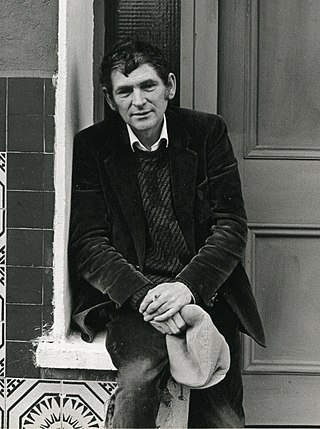
Michael Hartnett was an Irish poet who wrote in both English and Irish. He was one of the most significant voices in late 20th-century Irish writing and has been called "Munster's de facto poet laureate".
Máirtín Ó Direáin was an Irish poet from the Aran Islands Gaeltacht. Along with Seán Ó Ríordáin and Máire Mhac an tSaoi, Ó Direáin was, in the words of Louis de Paor, "one of a trinity of poets who revolutionised Irish language poetry in the 1940s and 50s." According to a 1984 lecture by Desmond Egan, "Ó Direáin's genius stands revealed - to the extent that we must look abroad for poets with whom his achievement might best be compared; to Spain and Antonio Machado's sweet intensity; to Russia and Akhmatova; to Germany and the bittersweet music of Heinrich Heine."
Máire Mhac an tSaoi was an Irish civil service diplomat, writer of Modernist poetry in the Corca Dhuibhne dialect of Munster Irish, a memoirist, and a highly important figure within modern literature in Irish. Along with Seán Ó Ríordáin and Máirtín Ó Direáin, Máire Mhac an tSaoi was, in the words of Louis de Paor, "one of a trinity of poets who revolutionised Irish language poetry in the 1940s and 50s."

Caitlín Maude was an Irish poet, language revival activist, teacher and actress. She is also well-known for her campaigns to improve the lives of women in Ireland.

Gabriel Rosenstock is an Irish writer who works chiefly in the Irish language. A member of Aosdána, he is a poet, playwright, haikuist, tankaist, essayist, and author/translator of over 180 books, mostly in Irish. Born in Kilfinane, County Limerick, he currently resides in Dublin.
Abdallah Zrika is one of the most famous poets of Morocco. His poetry is set in free verse, based on spoken language and unrivalled in contemporary Arabic literature in its spontaneity. For the Moroccan youth of the politically and socially repressive years of the 1970s, he represented the ideal of poetic writing, of freedom of living and expression.
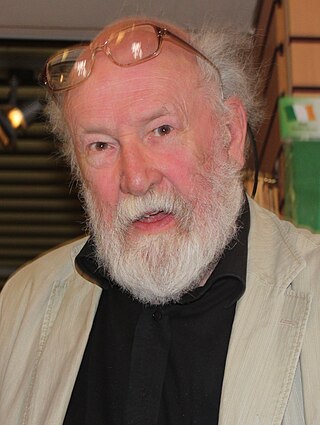
Pádraig Ó Snodaigh is an Irish language activist, poet, writer and publisher. He worked for the Irish Electricity Supply Board, and later in the National Museum of Ireland. He is a former president of Conradh na Gaeilge, the Gaelic League.

Donal Cam O'Sullivan Beare, Prince of Beare, 1st Count of Berehaven was an Irish nobleman and soldier who was the last independent Chief of the Name of Clan O'Sullivan. He was thus the last O'Sullivan Beare, a title of the Gaelic nobility of Ireland, and Lord of the Beara Peninsula in the southwest of Ireland during the early seventeenth century, when the English Crown was attempting to secure their rule over the whole island.
Tomás Mac Síomóin was an Irish doctoral graduate of Cornell University, New York, who worked as a biological researcher and university lecturer in the US and Ireland. He worked as a journalist, as editor of the newspaper Anois and for many years was editor of the literary and current affairs magazine, Comhar. He wrote in Irish and published both poetry and fiction in that language.

Linda Maria Baros is a French-language poet, translator and literary critic, one of the most powerful new voices on today's poetry scene . She lives in Paris, France.
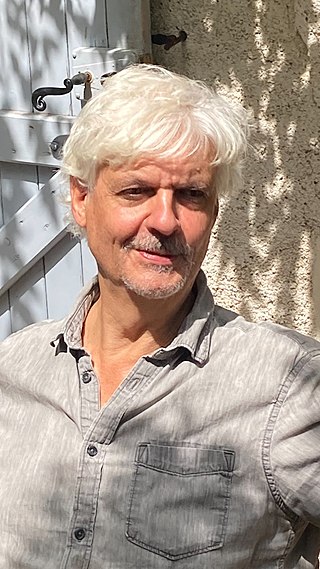
Stephen Romer, FRSL is an English poet, academic and literary critic.

Cathal Ó Searcaigh, is a modern Irish language poet. His work has been widely translated, anthologised and studied. "His confident internationalism", according to Theo Dorgan, has channelled "new modes, new possibilities, into the writing of Irish language poetry in our time".
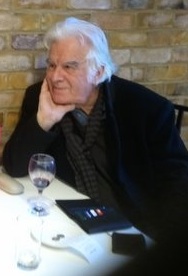
Reginald Gray was an Irish portrait artist. He studied at The National College of Art (1953) and then moved to London, becoming part of the School of London led by Francis Bacon, Lucian Freud and Frank Auerbach. In 1960, he painted a portrait of Bacon which is in the collection of the National Portrait Gallery in London. He subsequently painted portraits from life of writers, musicians and artists such as Samuel Beckett, Harold Pinter, Brendan Behan, Garech Browne, Derry O'Sullivan, Alfred Schnittke, Ted Hughes, Rupert Everett and Yves Saint Laurent. In 1993 Gray had a retrospective exhibition at UNESCO Paris and in 2006, his portrait "The White Blouse" won the Sandro Botticelli Prize in Florence, Italy.
Coiscéim is a prolific Dublin-based Irish-language publisher founded by writer, historian and language activist Pádraig Ó Snodaigh in 1980. With over 1,500 titles Coiscéim have published the largest number of titles amongst the 26 other Irish language publishers.
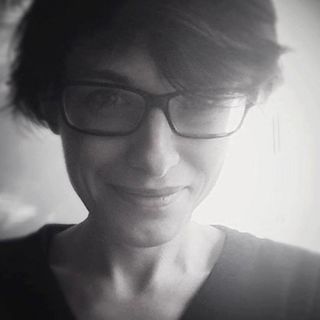
Deborah Heissler is a contemporary French author. Her works of poetry have garnered critical acclaim and numerous awards, including the Louis Guillaume Prose Poetry Award (2012), the Yvan Goll Francophone Poetry Award (2011) and the Bleustein-Blanchet Foundation Prize (2005).

Eithne Strong was a bilingual Irish poet and writer who wrote in both Irish and English. Her first poems in Irish were published in Combhar and An Glor 1943–44 under the name Eithne Ni Chonaill. She was a founder member of the Runa Press whose early Chapbooks featured artwork by among others Jack B. Yeats, Sean Keating, Sean O'Sullivan, and Harry Kernoff among others. The press was noted for the publication in 1943 of Marrowbone Lane by Robert Collis which depicts the fierce fighting that took place during the Easter Rising of 1916.

Denis Emorine is a French poet, playwright, short-story writer, essayist, and novelist.

Deirdre Brennan is a bilingual Irish poet, playwright and short story writer who writes both in the Irish language and in English.














